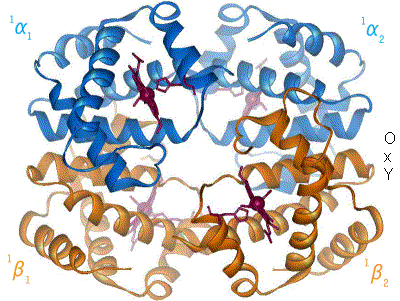Evolution of vertebrate hemoglobin

Scientists agree that the event that separated myoglobin from hemoglobin occurred after lampreys diverged from jawed vertebrates. This separation of myoglobin and hemoglobin allowed for the different functions of the two molecules to arise and develop: myoglobin has more to do with oxygen storage while hemoglobin is tasked with oxygen transport. The α- and β-like globin genes encode the individual subunits of the protein. The predecessors of these genes arose through another duplication event also after the gnathosome common ancestor derived from jawless fish, approximately 450–500 million years ago. The development of α and β genes created the potential for hemoglobin to be composed of multiple subunits, a physical composition central to hemoglobin's ability to transport oxygen. Having multiple subunits contributes to hemoglobin's ability to bind oxygen cooperatively as well as be regulated allosterically. Subsequently, the α gene also underwent a duplication event to form the HBA1 and HBA2 genes. These further duplications and divergences have created a diverse range of α- and β-like globin genes that are regulated so that certain forms occur at different stages of development.
Most ice fish of the family Channichthyidae have lost their hemoglobin genes as an adaptation to cold water.
Comments
Post a Comment